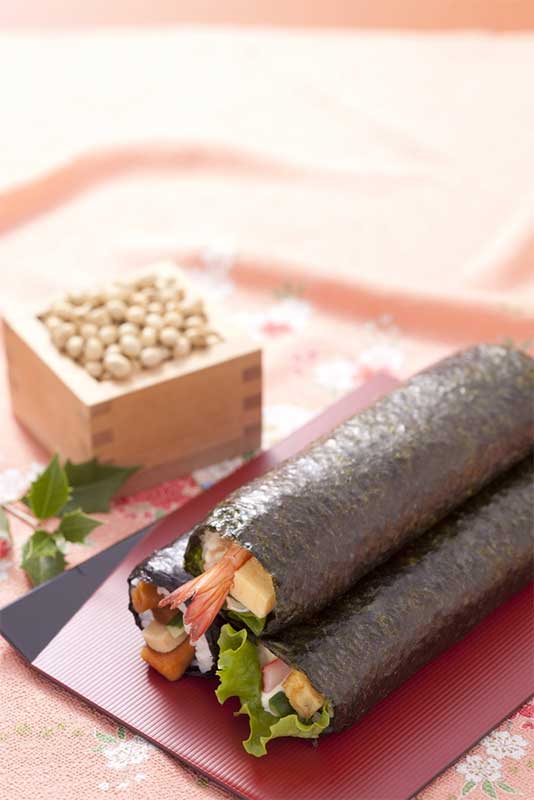The idea of eating seaweed might sound a bit odd, but if you’ve ever had sushi before, then you’ve already done it! The black paper-like sheet that holds your fish and rice together, called nori, is just one of the many types of edible seaweeds.
Nori comes from Japan, as does hijiki, arame, wakame, and kombu, while the Philippines gives us crunchy guso, and Korea provides gim. There are actually over 400 seaweed varieties in the world, but these are some of the most popular.
They may have exotic names and come from faraway lands, but seaweed is a healthful food you don’t want to exclude from your regular diet. Loaded with minerals and antioxidants, it can be used in a variety of dishes, from seaweed soup and sushi to salads and grain dishes.
Despite its popularity in Asian countries, seaweed is not typically found outside of Japanese restaurants here in the US. So, I think it’s safe to say most people don’t know a lot about seaweed. Check out these 7 surprising facts about seaweed, and impress your friends the next time you go out for sushi!
Seaweed Isn’t Exactly A Sea Vegetable
I often hear seaweed referred to as “sea vegetables.” While we do use them in a similar way to vegetables, the phrase is really just a marketing term to make them sound more appetizing. The fact is, seaweed is actually algae—though that doesn’t make it any less yummy!
Seaweed Has Unique Mineral Content
By weight, about 34% of dried seaweed is comprised of minerals, making seaweed one of the best sources of these nutrients. They contain all of the minerals required by the human body, including both the macro minerals (calcium, magnesium, potassium, phosphorus, chloride, sulfur, and sodium) and trace minerals (including zinc, copper, and iron).
Seaweed May Be The Secret To Japanese Hair
The thick, black, lustrous hair of the Japanese is said to be partly a result of their high intake of one particular type of seaweed, hijiki, which resembles long black hair as it grows on the ocean floor. Based on seaweed’s high mineral content, including both iron and zinc, this may be more than an old wives tale! We know that iron carries oxygen to the scalp, promoting hair growth, while zinc plays a role in hair follicle health and also spurs long locks.
Seaweed Is An Organic Fertilizer
Due to its high mineral content, seaweed was traditionally used as a fertilizer in coastal towns, where it was readily available. It is well documented that it was used on potato farms in Ireland for centuries, where records show that in pre-famine times, the seaweed-fertilized farms produced 20 times more potatoes than neighboring English farms that didn’t. To this day, you can still purchase seaweed fertilizer.
Seaweed Beats Bean Bloat
A great trick for making beans more digestible (and less likely to cause bloat) is to cook them with the seaweed kombu. After you initially soak the beans overnight, drain them, place them in a pot with fresh water, and add one 4-6 inch piece of kombu while you boil the beans until tender. The kombu reduces the gas-causing qualities of the beans, and as an added bonus, gives them a rich, deep flavor. When the beans are done, simply discard the kombu (any little pieces of kombu that break off can be eaten with the beans).
Seaweed Is The Secret To Vegan Dessert
Agar-agar, a type of seaweed, is often used as a thickener in desserts, soups, and sauce recipes, and makes a particularly creamy vegan frosting. Don’t be put off by visions of fishy-tasting cupcakes, though. Agar-agar has no odor, taste, or calories, so it makes a great substitute for gelatin, cornstarch, or other thickening agents.
Seaweed Makes A Great Snack
Nori has been pressed into sheets since the 18th century, but they’ve only recently become a popular snack food here. Of course, you can roll veggies, rice, or any other filling you choose, in nori sheets, but you can also just eat them plain! Mini seaweed sheets now come in a variety of flavors, like chipotle, wasabi, or onion. They are super low calorie, tasty, and highly nutritious. Sea Snax is my favorite brand, and—as the package says—they are strangely addictive.
Important Notice: This article was originally published at www.wellnesstoday.com by Maria Marlowe where all credits are due.









